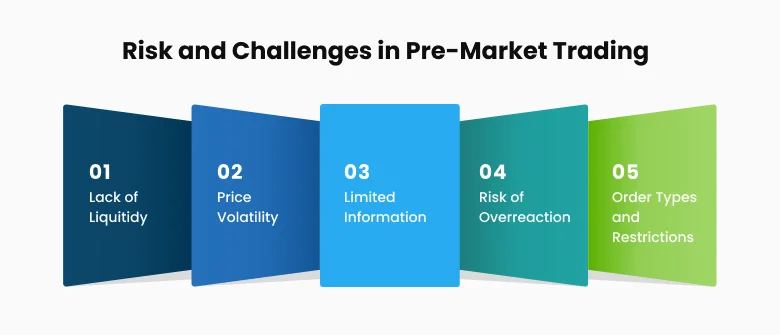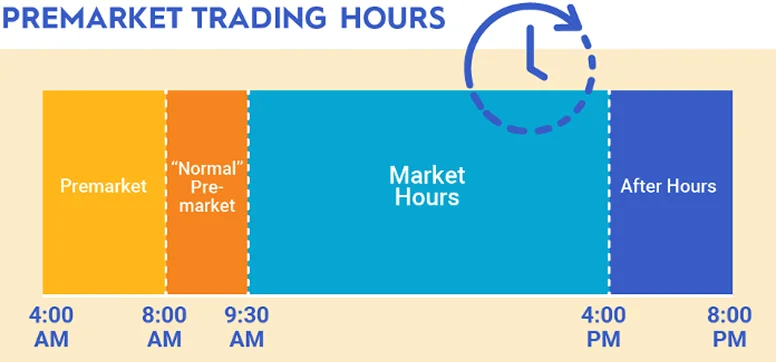

How to Capitalize on Pre-Market and After-Hours Trading Opportunities
Pre-market and after-hours trading provide distinctive opportunities for investors to capitalize on price movements beyond standard trading sessions. This overview will detail pre-market and after-hours trading, their operational mechanics, and strategies to leverage these extended trading periods. Additionally, we will discuss the associated risks and how platforms such as TMGM support traders in managing these off-hours market conditions.
What Is Pre-Market Trading and Why Is It Important?
Pre-market trading refers to the buying and selling of stocks or financial instruments prior to the official market open at 9:30 a.m. ET.
The pre-market session runs from 4 a.m. to 9:30 a.m. ET.
This session enables investors to respond to overnight news and market developments.
Pre-market trading provides insights into potential market behavior at the start of the regular trading session.
It allows investors to capitalize on price movements triggered by significant announcements.
 Key Drivers of Price Movements in Pre-Market and After-Hours Trading
Key Drivers of Price Movements in Pre-Market and After-Hours Trading
Economic Indicators
Major reports, such as the Employment Situation Summary, are released at 8:30 a.m. ET.
These reports can drive substantial price fluctuations before the market opens.
Investors monitor economic data to gauge market direction.
Earnings Reports
Earnings season heightens volatility during pre-market and after-hours sessions.
Significant deviations from analyst forecasts can lead to pronounced price swings.
Traders can profit from earnings releases but must carefully manage volatility risks.
Geopolitical Events
Major geopolitical or natural events can occur at any time.
Pre-market and after-hours trading allow investors to respond to these events ahead of the regular session.
Traders can position themselves to capitalize on price movements or to hedge risk.
How to Use Pre-Market Trading for Early Positioning
Monitoring economic data releases and earnings announcements can uncover trading opportunities.
Traders can anticipate market trends by staying informed about upcoming events.
For instance, stronger-than-expected earnings in pre-market trading can signal early upward momentum.
Conversely, traders can act swiftly on negative news or missed economic forecasts.

How After-Hours Trading Can Offer Additional Opportunities
After-hours trading takes place after the market closes, from 4 p.m. to 8 p.m. ET.
Investors can respond to late-breaking news, earnings releases, or global developments after regular trading hours.
After-hours trading is especially critical during earnings season when companies report results post-market close.
Traders can promptly act on price changes driven by earnings or news announcements.
This session enables traders to manage exposure or seize opportunities ahead of the next trading day.

Risks and Considerations in Pre-Market and After-Hours Trading
Low Liquidity
Liquidity is lower during these sessions compared to regular trading hours.
Bid-ask spreads tend to widen, which can make it more challenging to execute trades at optimal prices.
Increased Volatility
Fewer market participants can cause larger price fluctuations during pre-market and after-hours trading.
Traders should be prepared for swift changes in market direction.
Brokerage Limitations
Not all brokers provide access to pre-market and after-hours trading.
Some brokers may restrict the types of orders allowed during these extended sessions.
Verifying your broker’s capabilities for trading outside regular hours is essential.
Take Control of Your Trading with TMGM
Pre-market and after-hours trading offer opportunities to respond to key market events beyond regular hours.
By understanding the drivers of price action and associated risks, traders can develop effective strategies for these sessions.
TMGM’’s platform provides 24-hour trading access, enabling you to trade global markets outside traditional market hours.
Start trading today by visiting TMGM’s platform and take advantage of extended trading hours.
Trade Smarter Today






Account
Account
Instantly




